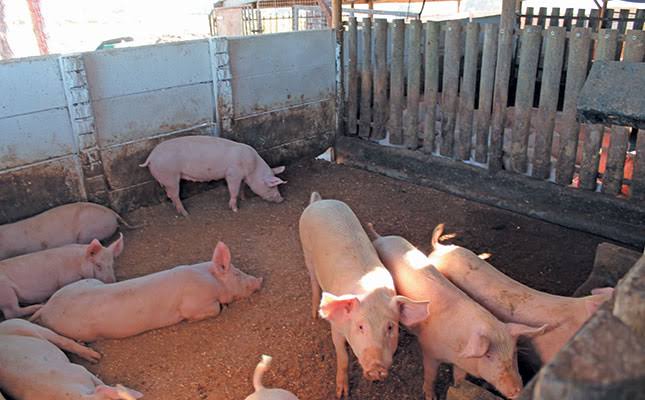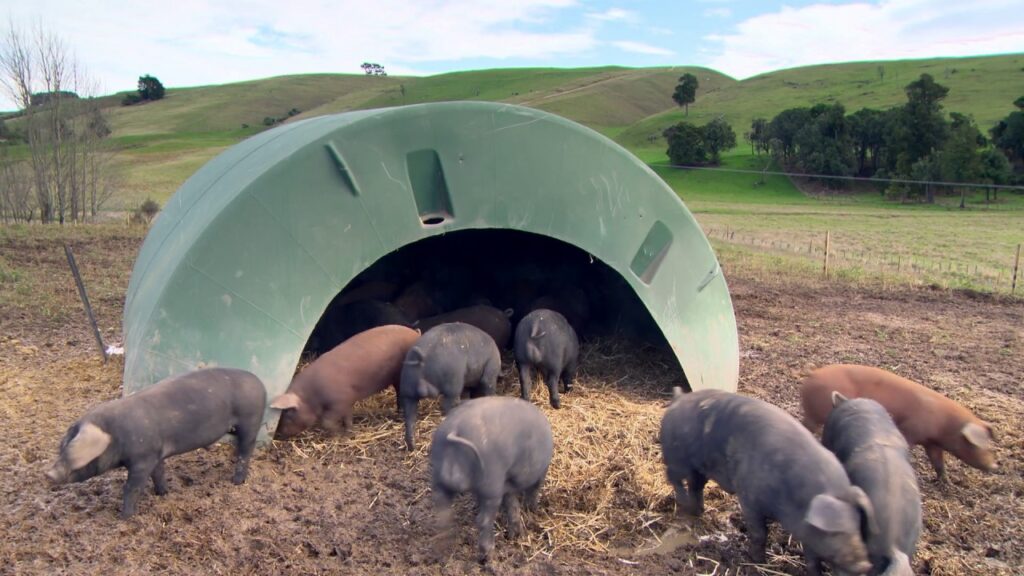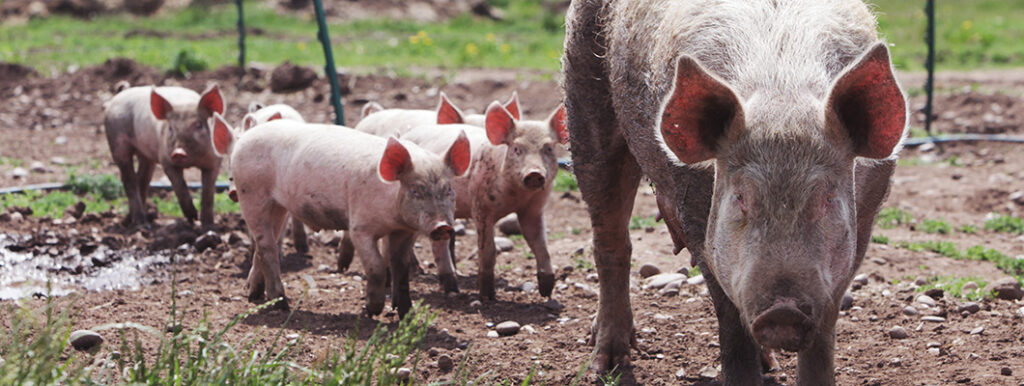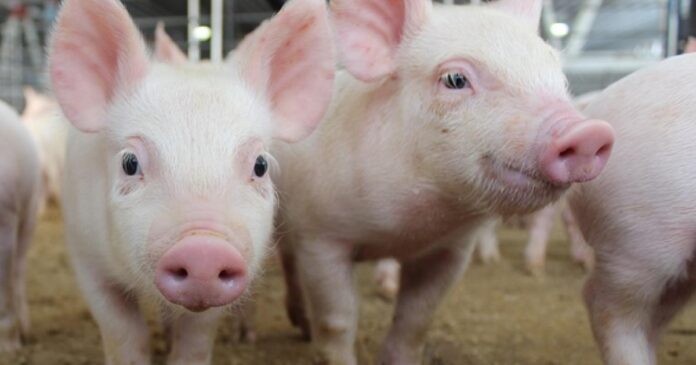There are three models for raising pigs. They are intensive, semi-intensive, and extensive.
Intensive
The farmer confines all the pigs within a building and does not allow them to move out. He raises the pigs inside the sties on either concrete or sawdust.
The farmer routinely provides feed, water, and veterinary services in adequate measure. The system saves labour and provides the conditions for management standards and easy control of internal parasites. There is also protection from inclement weather, predators, and thieves.
The feeding efficiency is high, thus, the growth rate is also very high.
The advantages of this model are;
- The farmer could have 24/7 access to the pigs for feeding, animal health, and checking their growth rate.
- Disease prevention and biosecurity systems are easy to factor into the operation.
- As the pigs do not have to expend energy looking for food, they reserve most of the energy for their growth and development. Thus, pigs confined in an intensive system reach their market weight earlier.
- The hygiene and sanitation around the pigs could be controlled to meet the highest standards.

Read also: Pigs Water Requirements : For Optimal Growth and Performance
Some of the downsides of this model include the following;
- The system requires high capital investment in infrastructure development, feeding, veterinary services, hygiene and sanitation, labour, and equipment.
Semi-intensive
In this system, the farmer provides housing for the animals and allows them to move out to feed on natural vegetation. The farmer provides paddocks around the housing, which he has fenced. Wallow pits and shady areas are also provided within the farm. Moreover, the farmer allows animals to move about, thereby, exercising themselves to prevent fat buildup in the body. Groups concerned about ethical standards in livestock farming would approve of this model. The system needs less capital investment, but the labour requirements, disease incidence, and parasite infestations are high. Concentrate feeds are also provided.

Extensive
The farmer allows the pigs to roam about and fend for themselves in this system. This system has little or no capital investment, and the cost of production is low. However, disease incidence and worm infestations are very high. The animals are also exposed to adverse weather conditions. In urban and peri-urban areas in most countries, this system is prohibited. Also, this model is not suitable for large-scale commercial piggery undertakings.
Read also: Detailed Guide to Pig Production and Management in Ghana

PROGRESSIVE PIG FARMERS NETWORK OF GHANA (PPFN-GH)
WE ARE BUILDING A NATIONAL SWINE INDUSTRY, USING 21ST CENTURY APPROACHES; TO BUILD A VIABLE VALUE CHAIN ATTRACTIVE TO THE INVESTOR COMMUNITY AND OUR TEEMING UNEMPLOYED YOUTH. HELPING TO CUT YOUTH UNEMPLOYMENT AND THE NATIONAL PROTEIN DEFICIT.
FOLLOW US ON FACEBOOK.HTTP://M.ME/PPFNGHAHTTPS://WWW.FACEBOOK.COM/PPFNGHA/
TELEGRAM: HTTPS://T.ME/JOINCHAT/AAAAAAROTLOYNUMKRTKBDQ
WHATSAPP : +233205551777


